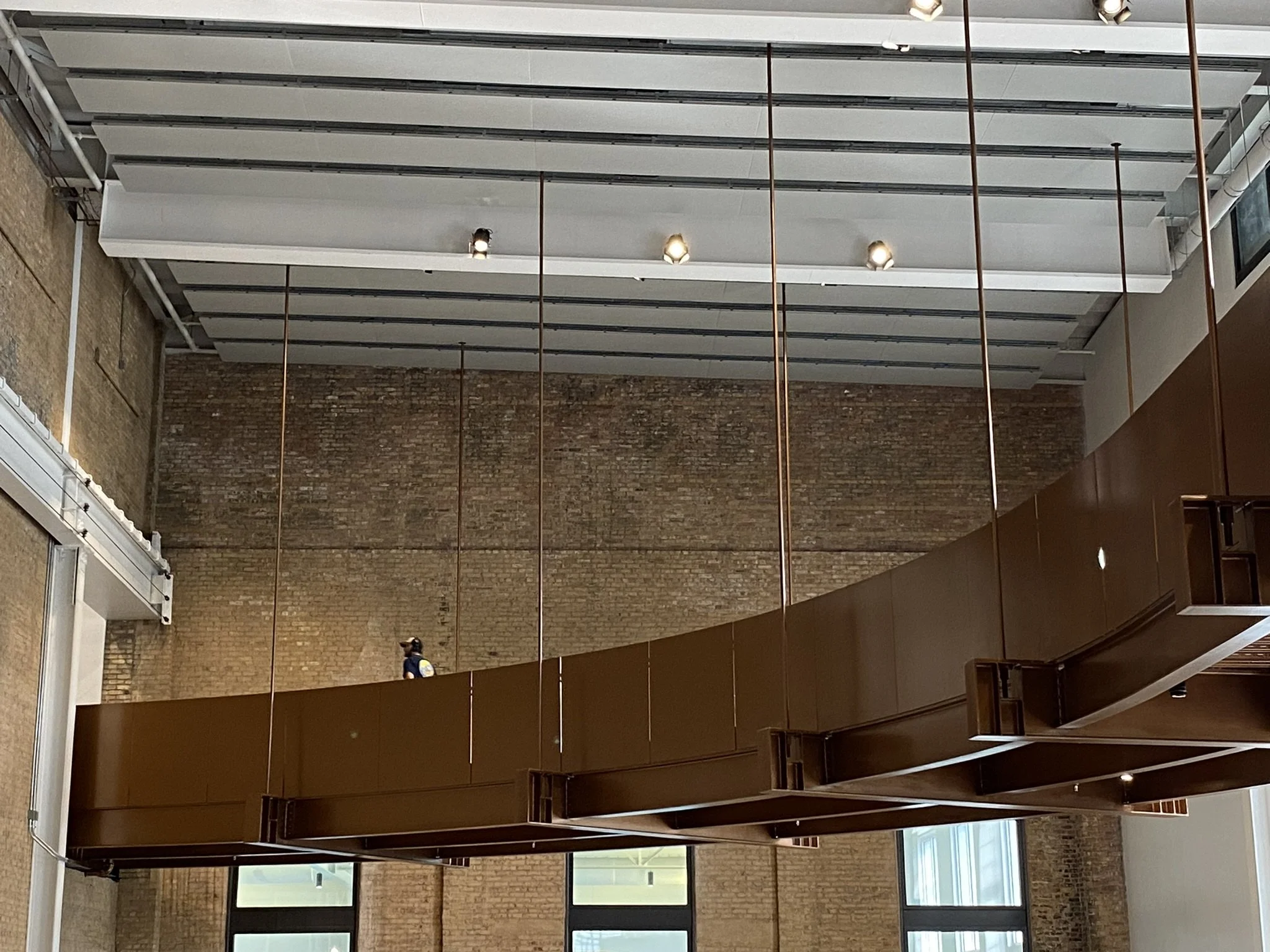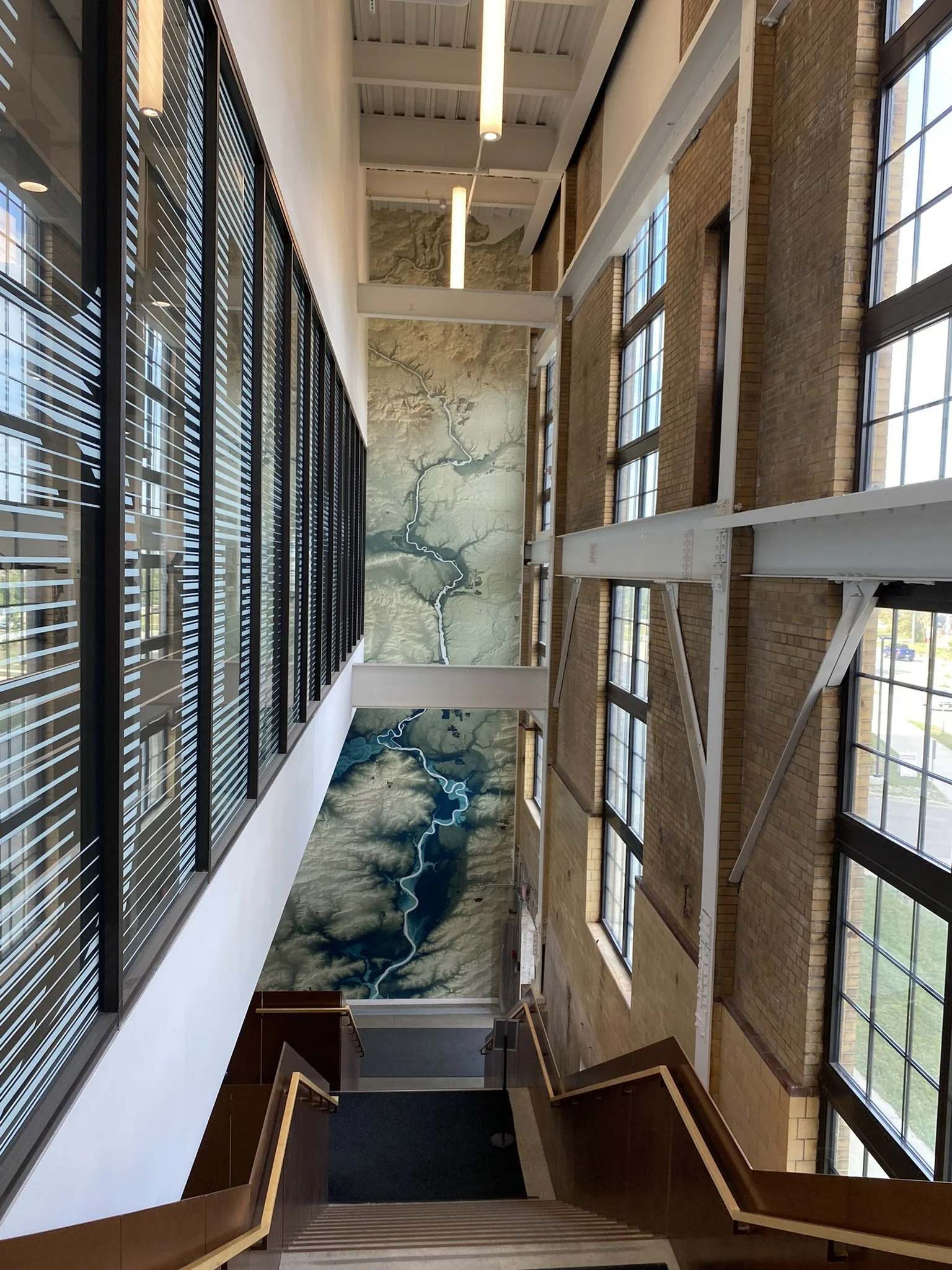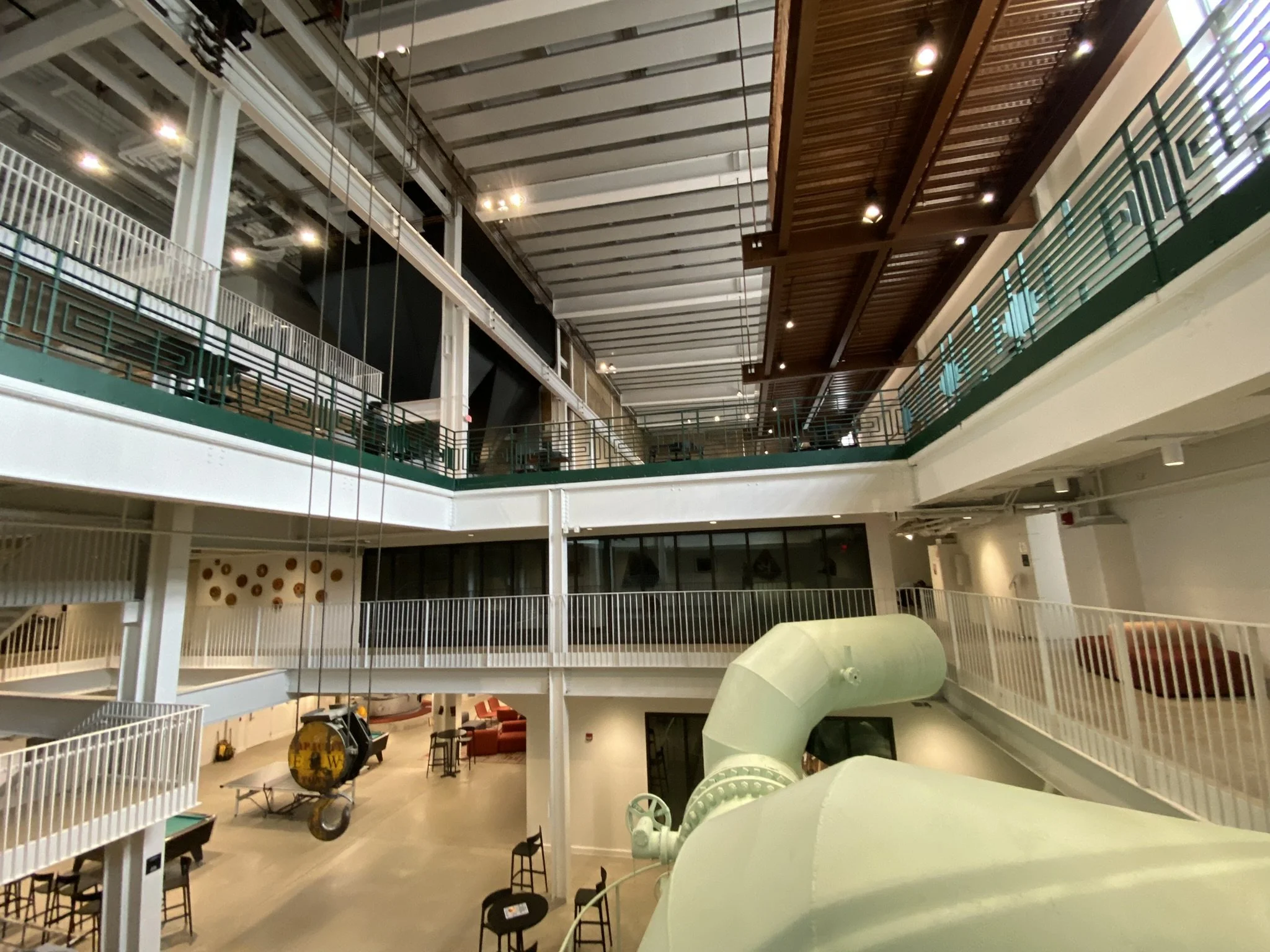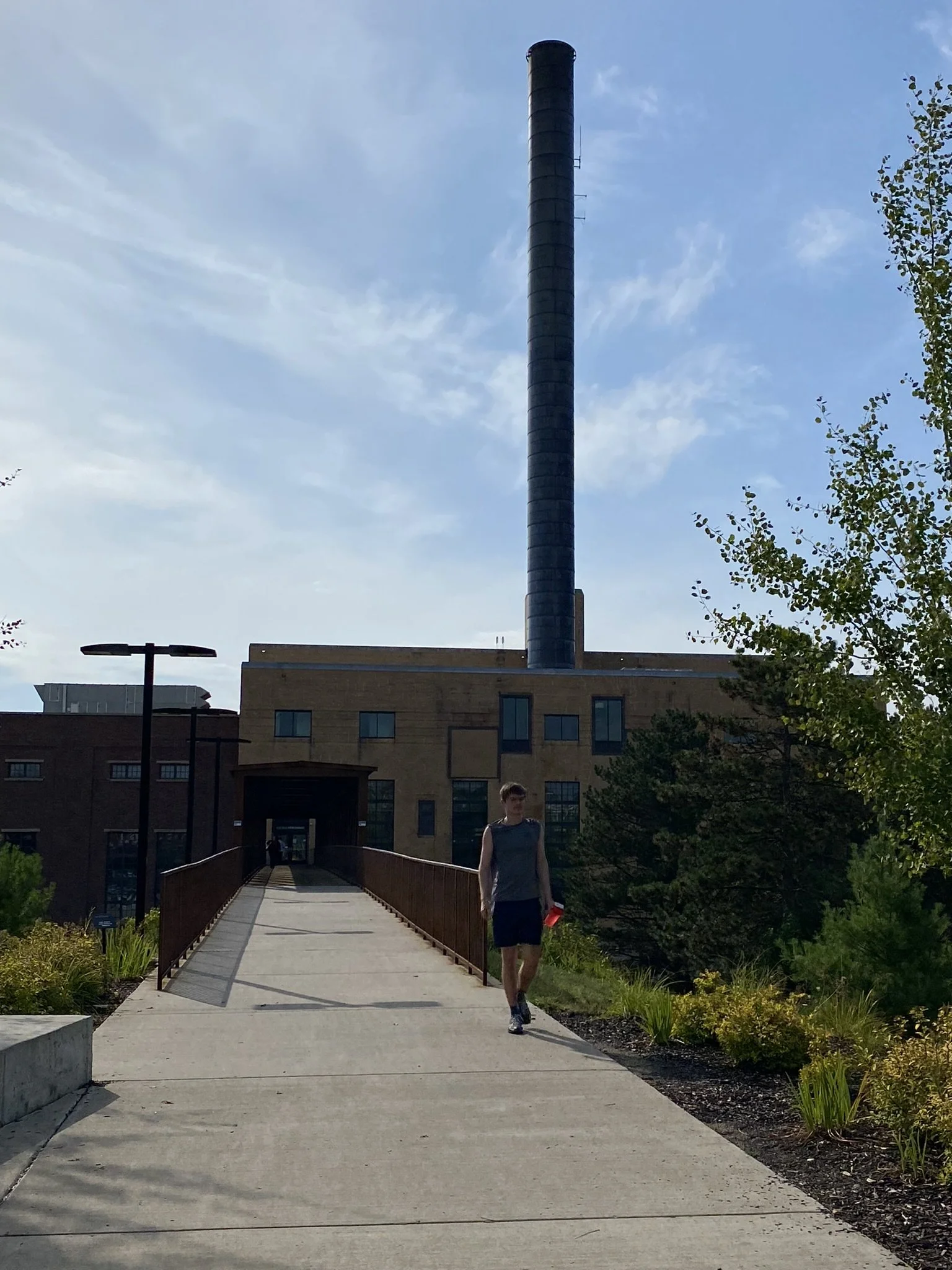Credit: Tom Harris, Courtesy Studio Gang
By Lois Kimmelman, LEED AP
Credit:Lois Kimmelman
Since its inception in 1907, the forbidding Blackhawk Generating Station was the polar opposite of a friendly next-door neighbor to Beloit College’s quaint, leafy campus, located across Pleasant Street in Beloit, Wisconsin. Whenever winds blew from the west, the coal-fired, steam-generating electric power station’s 135-foot-high smokestack would belch plumes of polluted air toward the college green. This continued for years, as the brick, concrete, and steel plant expanded in stages until 1947, and finally ended in 2010 when its owner, Alliant Energy, ceased operations, slating the plant for demolition.
By 2013, the College had outgrown its World War II-era field house and sorely needed a student union. Then—eureka!—College officials realized that instead of a huge, grimy eyesore, they were sitting next to a gold mine: Why not turn the cantankerous, cobwebby coal plant into space for working out, hanging out, and study? This led to the formation of a public-private partnership between the College, Alliant, and other interested parties to buy and renovate the structure. They enlisted architect Jeanne Gang’s firm to be the brains behind the transformation of Blackhawk Station.
Credit:Lois Kimmelman
Not only did Studio Gang and their multifaceted team take the challenge, but they also went several giant steps further. They started the wheels turning to make the Powerhouse, as it is now known, a state landmark, and committed to preserving its sturdy old bones and exterior. They integrated reminders of its industrial past, like the smokestack, coal hoppers, and instrument control panels, into the design. At the same time, a suite of sustainable features was incorporated into the specs. For example, the retooled Powerhouse makes the most of its proximity to the Rock River that runs along its western edge. River water is piped into the building, where it flows into energy-saving radiant panels that either heat or cool the structure, depending on the season. Oversize windows allow daylight to illuminate the hive of activity inside the spacious interior; insulation was upgraded, and a superefficient HVAC system was installed.
Credit:Lois Kimmelman
The project also included a brand new 17,000-square-foot field house connected to the north end of the old power plant, bringing the total size of the Powerhouse to a whopping 120,000 square feet. The field house sports a façade of translucent polycarbonate panels separated by columns of windows, all serving to insulate the modern addition from Wisconsin’s weather, while evenly lighting its indoor playing fields and acting as a beacon for the riverfront complex at night when its LED’s are switched on. The paneling, though airy and graceful, is strong enough to withstand the impact of an out-of-bounds ball!
Credit:Lois Kimmelman
The Powerhouse officially opened in 2020, seven years and $45 million after the College’s call for proposals. Today its 1000 students reap the benefits afforded by the Powerhouse facelift: they can both work and play in a one-of-a-kind, enormous space where old coexists with new, and they can connect more easily to the surrounding community. They now cross from the main campus to the Powerhouse via an elevated pedestrian bridge, a bonus that came with the renovation. There they play chess, ping-pong, and pool; swim laps in an 8-lane pool; lift weights; go to soccer practice; or jog on the indoor track suspended above the building’s main floor, dubbed Turbine Hall. They descend to the lower level auditorium to attend a lecture or cram for finals after grabbing a sandwich at the onsite coffee shop. If the weather’s good, they can eat on an outdoor patio overlooking the river, or amble down the adjacent riverwalk that connects the college with the city.
More power to the Powerhouse! The complex got high marks from a long list of organizations and is LEED-certified.
Read more about historic buildings getting a green makeover on Lois Kimmelman’s website/blog, Historecycle. She promotes restoration and renovation, not demolition.





